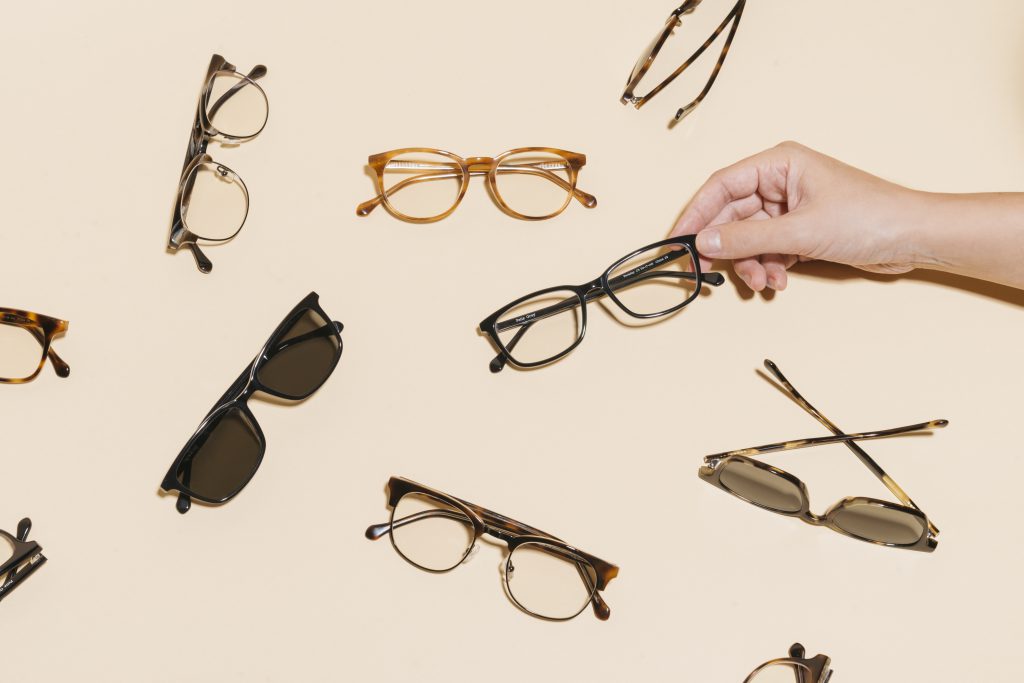Many people don’t know the difference between nearsighted and farsighted vision. Especially if you’re not a glasses wearer or haven’t been until recently, you might not be familiar with the difference between farsighted and nearsighted. Chances are, if you know someone who wears glasses, or you wear glasses yourself, that person suffers from either nearsightedness or farsightedness. Both conditions are affected by the way that light reflects into the eye. These are referred to as refractive disorders because they’re categorized by how light bends or refracts in your eyes. To figure out near versus far sighted, the first step is to look at both the nearsighted and farsighted definition.
What does nearsighted mean?
Nearsighted means that objects that are close to you appear clearer than objects that are farther away. This is also known as the condition of myopia. Nearsightedness is caused by the shape of your eye making light waves refract incorrectly. This causes images to focus in front of the retina instead of on your retina. As a result, images far away appear blurry while images close up are not affected.
Nearsightedness is much more common than farsightedness and is commonly found in childhood or in one’s early adult years. To help treat this common issue in childhood, Felix Gray has created their own line of stylish kids’ glasses. They come in both non-prescription and prescription varieties so all kids can benefit from them (especially kids who are nearsighted). Needing glasses can be a bother for some children, which is why Felix Gray makes their glasses in fun colors and shapes so every kid actually wants to wear them. They also contain proprietary Blue Light filtering technology to provide maximum filtration when in front of a screen, while also helping their vision. Nearsightedness, whether it be in childhood or not, is nothing to worry about and can be easily treated.
What does farsighted mean?
Farsighted means that objects far away appear clearer than objects close to you. Farsightedness is also known as hyperopia and is normally a result of an eyeball that is too short. In this instance, light is reflected behind the retina instead of on it. This causes objects close to you to appear blurry, and they become clearer the further away that you move them. Because of this, reading is often a challenge for farsighted individuals. A large difference between far and nearsighted is that farsightedness is more common in the later years of life. You might notice your parents or you recently starting to squint when reading or looking at a screen. This is a type of farsightedness called presbyopia, and it is the specific type of farsightedness caused by age. This is why most adults start to need reading glasses or progressives as they get older. Farsightedness at any age is not something to be concerned about and can be easily fixed with simple treatments.

How to determine if you’re nearsighted vs. farsighted?
Now that you know the difference between near and farsighted you can see for yourself if you have either of these conditions. All you need to do is place an object (such as a book or a picture) about twenty feet in front of you. Next, move closer to the object then move further back and see which position gives you a clearer image. If the image appears better when closer, then you are most likely nearsighted. If the image appears better when you are further away, then you are most likely farsighted. If the image looks the same as you move back and forth you are likely neither nearsighted nor farsighted!
If you experience any of the following you may have untreated symptoms of nearsightedness:
- Blurry vision – If you experience blurry vision when viewing objects at a distance you might be nearsighted.
- Headaches – If you experience headaches that are a result of straining to see objects far away, then you might be nearsighted.
- Squinting – If you need to squint in order to see objects that are far away, this may also be a sign that you’re nearsighted.
Additionally, there are common symptoms of undiagnosed farsightedness to know about:
- Blurry vision – If you experience blurry vision when trying to read or look at something close to you, you may be farsighted.
- Eye discomfort – Other signs of farsightedness are if your eyes are achy, tired, or burning after long periods of time doing up-close work such as reading, texting on your phone, or browsing online.
- Headaches – Similar to nearsightedness, farsightedness can cause headaches due to eye strain.
The symptoms of both nearsightedness and farsightedness are very similar to each other, but it is very important to know the difference between far and nearsighted. If you’re experiencing any of these symptoms, you should consult your doctor and receive an eye exam.
How to treat nearsightedness and farsightedness?
The most common treatment for both nearsightedness and farsightedness is wearing prescription glasses or contact lenses. Nearsighted and farsighted glasses solve your vision problems by correcting the lenses to fix the eyesight disparity. If you’re unsure of how to interpret your prescription, there is a common rule for determining nearsighted versus farsighted. If you have a minus (-) prescription from your doctor, this indicates nearsightedness. If you have a plus sign (+), this symbolizes farsightedness. Prescription glasses like the ones offered by Felix Gray will make great nearsighted and farsighted glasses as they offer a variety of styles and colors. Felix Gray offers Blue Light glasses to protect your eyes from the impactful light and its effects. We recommend consulting your eye doctor to get an eye exam done to obtain your correct prescription. Then, head on over to Felix Gray to shop for your new pair of prescription lenses.
If you find that glasses or contact lenses are not the best options for you, there is also a laser eye surgery that reshapes the cornea to help fix your vision. This is usually the last step and we recommend consulting your doctor about this more advanced option. It’s also recommended to wait until adulthood to get the surgery to ensure your vision has stabilized and won’t change drastically. This procedure is very helpful for most people, and your doctor will be able to provide the appropriate medical care recommendation that’s the best fit for you and your health.

What is the difference between nearsighted and farsighted glasses styles?
If you’re wondering what’s the difference between nearsighted and farsighted glasses styles, we have just the thing for you. The shape of the lens usually determines which style looks the best. For farsighted individuals, shorter and narrower frames tend to be the preferred style. This is the look most often associated with reading glasses. There tends to be great flexibility with what frame style nearsighted individuals choose. This can vary from small round frames, oversized square frames, or shorter narrower frames as well. Of course, these are just common practices and not strict rules, so choose the pair of glasses that work best for you!
That’s why Felix Gray has a multitude of styles to match your prescription needs. If you have any questions about which style is best for you (or just about Felix Gray glasses in general), don’t hesitate to reach out to our Customer Experience Team through email, chat, phone, or Facebook messenger with any questions, comments, or concerns.
